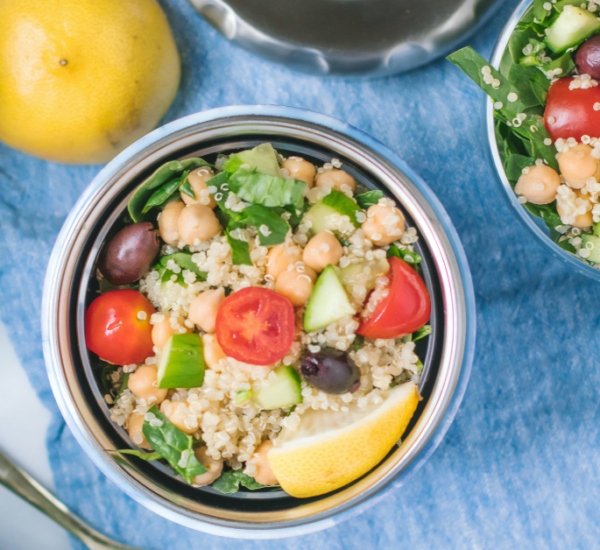Kids seated at the table…nutritious meal served…child’s face contorts when green thing is spotted on the plate…parental charade of calm quickly fades as child utters – ”I don’t want it”.
This all too familiar scene evokes a universal sigh from parents around the globe.
In the absence of any feeding or sensory issues, take some reassurance in that fussy eating is normal and likely has an evolutionary basis to it. Wariness towards new food is instinctive and is what safeguarded ‘cave-kids’ from eating potentially toxic plants and animals. By understanding how we’re programmed we can see that while fussy eating may be frustrating, it’s actually a normal part of human development.
While it’s no easy feat, provide reassurance and persist with offering vegetables. It may even take up to 20 attempts (yes, really!) before your child accepts a new food. In the meantime, here are some suggestions to help your kids eat more veggies.
Note: Proceed with patience…
1. Be a Role Model
Kids tend to mirror others and they certainly don’t want to miss out on anything – so embrace it! Let your kids see that you enjoy eating a variety of colourful vegetables and are interested in trying new foods.
Don’t assume that because you don’t like a particular vegetable, your kids won’t either. If they can see you don’t like it, there is Buckley’s chance they’ll want to try.
2. Division of Responsibility
You may have sworn you’d never be the parent that resorts to frozen chicken nuggets, but when your delicious healthy meal is met with tightly pursed lips and a stare of repulsion, your surrender can be forgiven.
Dietitian and feeding expert Ellyn Satter, offers the following advice –
It is your responsibility to decide what, when and where healthy food is offered AND it’s the child’s responsibility to decide how much and whether they eat1.
That said it’s perfectly fine to have your child select from a couple of healthy options that you have chosen. For example, have them pick between mashed or oven-baked potato.
Remember – you are not a rolling buffet, ready to serve your child whatever it is they want. Doing so will only pave the way for a fussy eater. Don’t worry yourself if your child decides to hold firm like a seasoned hunger striker as a missed meal or snack won’t harm a healthy child.
3. New Foods with Familiar Foods
If you’re facing resistance, try pairing new foods with old favourites. Research suggests kids may be more willing to taste new foods served in this way2.
Also read: How to Enjoy Desserts the Healthy Way
4. Plate it Up
Whether they are eaten or not, get into the habit of serving veggies with meals. The aim is to teach kids good habits for life, and this includes understanding what a balanced meal looks like. If today you don’t have a win, no stress – you can always try again at another meal.
5. No More Grazing
If your fingers are crossed hoping the kids will eat the delicious veggie filled lasagna you’ve labored over, you’re going to need hungry tummies. Grazing throughout the day will only dampen their appetite and make it all the harder to eat a proper meal. While smaller children need to eat more often, older kids will often do just fine with 3 main meals and 2 snacks.
Also read: Best Snacks for Weight Loss
6. Just a Taste
Make it a rule in your house that each food on the plate needs to be tasted. If after tasting they truly don’t like a vegetable or other part of the meal they can leave it. Even if they only lick, smell or take a teeny tiny bite, repeated exposure will help kids learn to accept new food.
For younger kids, a ‘Play Picnic’ is a fun way to explore new foods. Let them play, taste, lick and spit out food as they please. It’s messy – but it’s all part of learning to eat.
7. Make Food Fun
Kids are drawn to colour and fun shapes! Now, before you start carving cauliflower into Elsa from Disney’s Frozen, try out simpler ideas like spiral carrots, vegetable kebab sticks or funny faces made with sliced veggies. Younger kids love to show independence, so try offering veggies sticks that they can dip into hummus, tzatziki or even mashed potato.
8. Funny Names
Don’t you wish you were served “X-ray Vision Carrots” growing up? Pretty cool, huh?! Funny names like this have been given the thumbs up by science as a way to help kids eat more vegetables3.
9. Forget the Bribery
It’s tempting…I know…but do resist the temptation to bribe. While bribery may get them to eat their vegetables, think about the message it’s sending – “vegetables are gross and ice-cream is my prize for eating them”. While it takes time for kids to like vegetables, sometimes their reluctance may also be a show of independence. Remove the pressure to eat their veggies and they may just surprise you by eating them.
1o. Get Them Involved
Nurture healthy food relationships by involving kids with their food. Let them help you in the kitchen, plan yummy meals, grow a vegetable garden or take them shopping to pick vegetables to match the colour of the rainbow.
References:
1 Ellyn Satter (2015). Ellyn Satter’s Division of Responsibility in Feeding. Ellen Satter Institute (ESI). Available at – http://ellynsatterinstitute.org/cms-assets/documents/203702-180136.dor-2015-2.pdf
2 Pliner, P and Stallberg-White, C. (2000). “Pass the ketchup, please”: familiar flavors increase children’s willingness to taste novel foods. Appetite. 34(1):95-103.
3 Wansink, B et. al. (2010). Attractive Names Sustain Increased Vegetable Intake in Schools. Preventive Medicine, 55(4): 330-332.














